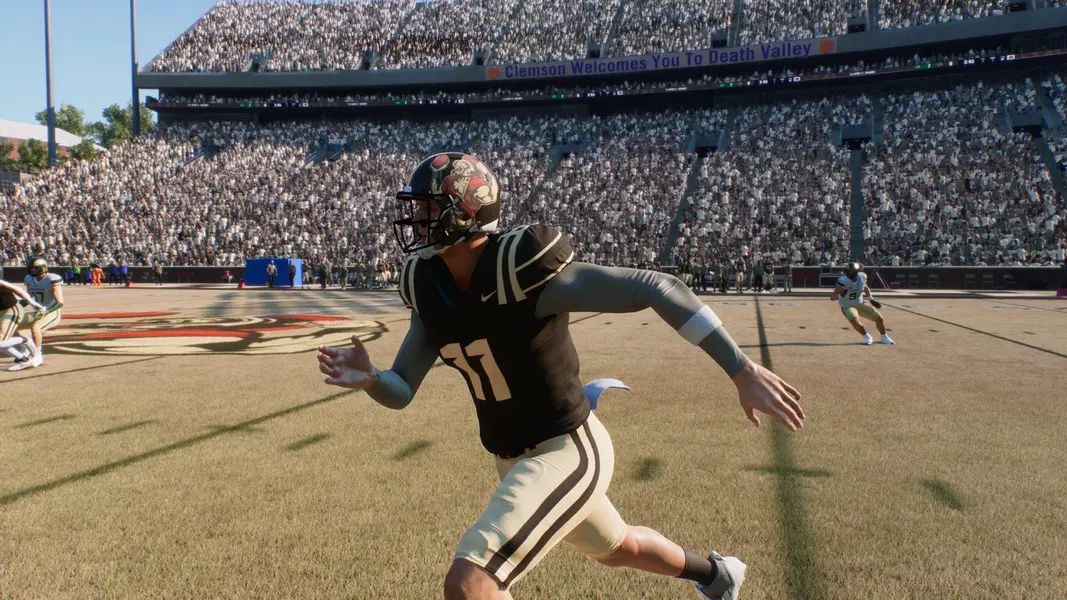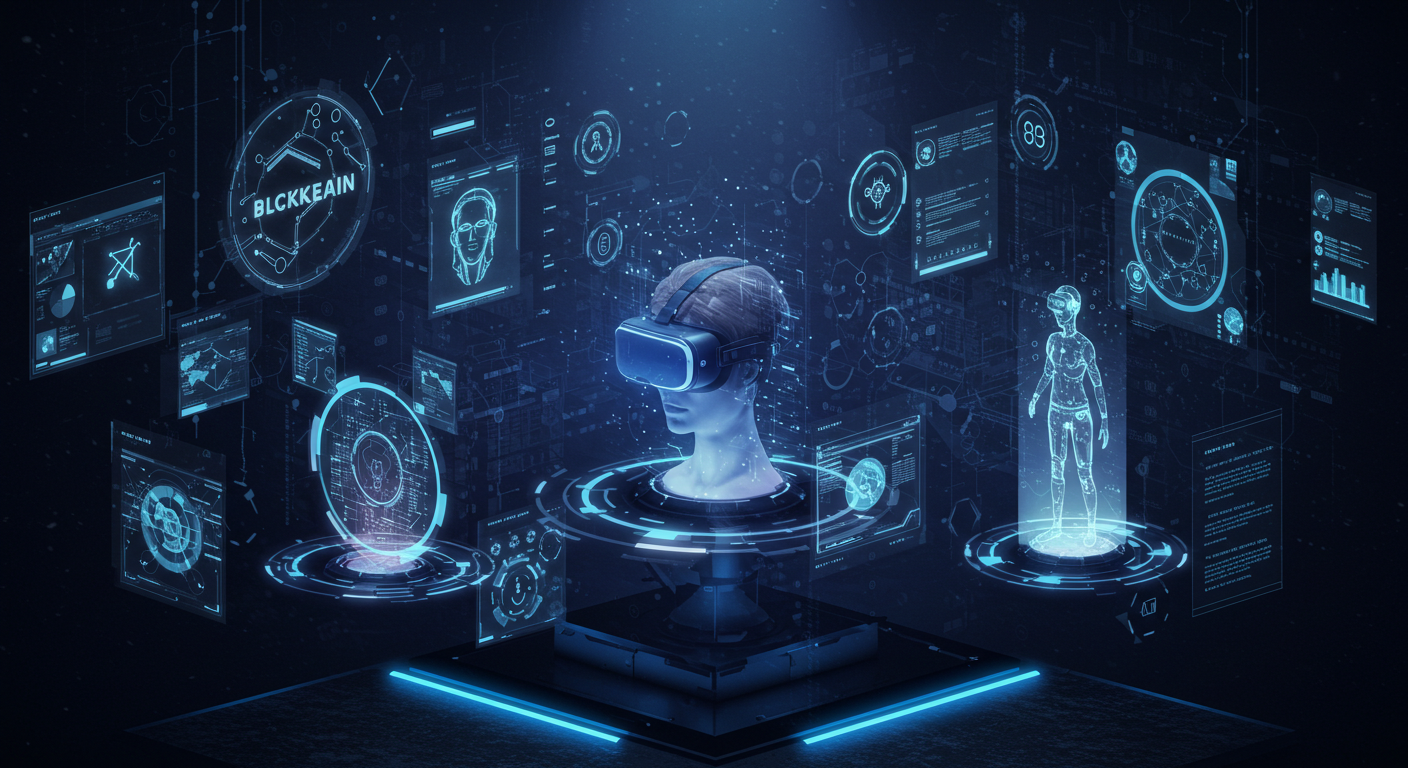Gaming
Can I Use My High School Logos in NCAA Team Builder?

The NCAA Team Builder feature in EA Sports College Football 25 is a super fun way to create your own college football team. You can design everything from the team’s uniforms to the stadium, and even add custom logos. Many fans want to recreate their high school teams in the game to bring their school spirit to the college level. But here’s the big question: Can you use your high school logos in NCAA Team Builder? In this article, we’ll explain the rules, why they exist, and how to stay safe while creating your dream team. We’ll keep it simple for young readers and pack it with helpful tips for gamers and sports fans!
What Is NCAA Team Builder?
NCAA Team Builder is a tool in EA Sports College Football 25 that lets you create a custom college football team. You can pick your team’s name, colors, uniforms, and logos. Want to make a team based on your high school or a totally new idea? You can do it! The tool lets you:
- Choose a primary, secondary, and tertiary logo for helmets, jerseys, and fields.
- Pick uniforms from brands like Nike, Adidas, or Under Armour.
- Design your stadium, including the field and crowd colors.
- Customize player rosters and playbooks.
Once your team is ready, you can import it into the game for Dynasty Mode, Play Now, or online play. It’s a great way to show your creativity, but there are rules about what logos you can use.
Can You Use High School Logos in NCAA Team Builder?
The short answer is no, you can’t use your high school logos in NCAA Team Builder if they are copyrighted or trademarked. Here’s why:
- Copyright and Trademark Rules: Most high school logos are protected by copyright or trademark laws. These laws stop people from using logos without permission, especially in a commercial product like a video game. EA Sports, the company behind College Football 25, has strict rules to avoid legal trouble. They don’t allow copyrighted logos in Team Builder, including those from high schools, colleges, or pro teams.
- EA’s Rules of Conduct: When you use Team Builder, you agree to EA’s Rules of Conduct. These say you can’t upload logos that violate copyrights or trademarks. If you upload a high school logo and it’s flagged as copyrighted, EA might remove it or even ban your team from the game.
- Risk of Removal: Team Builder is online, so EA can check logos for copyright issues. If your high school logo is too similar to a protected design (like an NFL or NCAA logo), their software might catch it. At worst, your team could lose its logos, or you might face account penalties.
- High School Logo Issues: Some high schools use logos that look like pro or college teams, like the Atlanta Falcons or USC Trojans. These schools might have permission to use them, but that doesn’t mean you can use them in a video game. Even if your school created its own unique logo, it’s likely still protected by trademark law.
Why Are These Rules So Strict?
You might think, “It’s just a game! Why can’t I use my high school’s logo?” Here’s why EA is so careful:
- Legal Protection: EA Sports makes money from College Football 25, so they could get sued if players use copyrighted logos. For example, a high school or a pro team could claim EA is profiting from their logo without permission. To avoid this, EA bans copyrighted content.
- Fairness for All Players: The rules keep the game fair. If someone uploads a famous logo, like the Dallas Cowboys star, it could make their team more popular than others. EA wants everyone to have a chance to shine with original designs.
- Protecting Schools: High schools and colleges own their logos to control how they’re used. If you put your school’s logo in a game, it might be shared online or used in ways the school doesn’t like. This could hurt their reputation or brand.
If you’re wondering how to create a cool team name for your custom squad, check out kickball team names for fun and creative ideas that can inspire your football team’s identity! You can also explore Teamnamesed.com for tons of team-naming tips and sports trivia to make your NCAA Team Builder experience even more exciting.
What Can You Do Instead?
Don’t worry! You can still create an awesome team inspired by your high school without using its logo. Here are some safe and fun options:
- Use EA’s Generic Logos: Team Builder offers a bunch of pre-made, recolorable logos that aren’t copyrighted. You can pick one that looks similar to your high school’s mascot (like an eagle, tiger, or bulldog) and change the colors to match your school.
- Create Your Own Logo: Make a new logo using tools like Canva, Adobe Illustrator, or Midjourney (an AI image creator). For example, if your high school mascot is a lion, design a unique lion logo with your school’s colors. Just make sure it’s 512KB or smaller and has a transparent background.
- Change the Design Slightly: If your high school’s logo is a blue eagle, create a new eagle logo with a different pose or style. It should be different enough to avoid looking like the original. For example, Eastern Michigan and East Tennessee State both have unique eagle logos that don’t copy each other.
- Focus on Colors and Names: Use your high school’s colors and nickname to capture its spirit. For example, if your school is the Lincoln High Wildcats with red and black colors, name your team the Lincoln Wildcats and use red and black uniforms. This keeps the vibe without breaking rules.
- Test It Privately: If you’re tempted to upload a high school logo, keep your team private (not shared publicly). This lowers the chance of EA flagging it, but it’s still risky. It’s better to stick to original designs.
Tips for Creating a Great Team in NCAA Team Builder
Here are some ideas to make your custom team stand out without using copyrighted logos:
- Pick a Unique Name: Choose a cool team name that feels like your high school but doesn’t copy it exactly. For example, if your school is “Springfield High Eagles,” try “Springfield Valley Eagles” for a fresh twist.
- Customize Uniforms: Use Team Builder’s five uniform presets to create up to 625 combinations (5 helmets, 5 jerseys, 5 pants, 5 socks). Add custom layers to helmets and jerseys for a unique look.
- Design a Cool Stadium: Add your team’s logo to the field at midfield or the 25-yard lines. You can also customize the endzone text and crowd colors to match your team’s vibe.
- Use AI Tools: Programs like Midjourney can create original logos. Try a prompt like “a fierce wolf logo for a college football team” to get a design that’s all yours. Remove the background with Canva or Clipping Magic before uploading.
- Save Often: Team Builder is online, so save your work after each step (logos, uniforms, stadium) to avoid losing progress.
What Happens If You Break the Rules?
If you upload a copyrighted high school logo, here’s what might happen:
- Logo Removal: EA’s software might detect the logo and remove it, leaving your team with a blank or generic design.
- Team Ban: If your team is public and violates EA’s rules, it could be deleted from the servers. You’d lose all your hard work.
- Account Penalty: In rare cases, EA might suspend or ban your EA account for repeated violations. This could lock you out of online features in College Football 25.
To stay safe, always use original or EA-provided logos. It’s not worth the risk!
Why Do High Schools Have These Logos Anyway?
Many high schools use logos that look like pro or college teams because it’s a tradition. For example, a high school might use a logo similar to the Atlanta Falcons because it’s cool and popular. Some schools get permission from pro leagues like the NFL, which allow it for free promotion. But this permission doesn’t extend to video games or fans using the logo in Team Builder.
If your high school’s logo is unique, it’s still protected by trademark law. Schools want to control how their brand is used, so they don’t allow it in games without permission.
How to Follow NCAA Team Builder Rules
Here’s how to enjoy Team Builder while staying within the rules:
- Check EA’s Website: Visit EA.com for Team Builder tutorials and guidelines. They explain how to upload logos and what’s allowed.
- Use the Community Safely: Share your team in the “Download Center” to show off your designs. Search for other players’ teams by state or uniform brand, but only download ones that follow copyright rules.
- Ask for Help: If you’re stuck, check forums like Reddit’s r/NCAAFBseries or Operation Sports for tips from other players. They share ideas for creating original logos.
- Stay Updated: Follow @EASPORTSCollege on X for news about Team Builder updates or rule changes.
Conclusion
You can’t use your high school logos in NCAA Team Builder if they’re copyrighted or trademarked, which most are. EA Sports has strict rules to avoid legal issues, and uploading a protected logo could get your team removed or your account penalized. Instead, use EA’s generic logos, create your own with tools like Canva or Midjourney, or design a team inspired by your school’s colors and nickname. This keeps your team safe and lets you have fun building a unique college football program!
Gaming
Game Art Outsourcing: Complete Guide to Services

The global gaming industry has evolved beyond imagination — from pixel-based 2D designs to lifelike 3D environments and cinematic experiences. As development pipelines become more complex, studios are increasingly relying on game art outsourcing to streamline production, reduce costs, and enhance creative output.
Outsourcing is no longer just a cost-saving measure — it’s a strategic decision that empowers developers to access global talent, stay on schedule, and deliver stunning visuals. Partnering with a professional game art outsourcing company ensures that your project maintains artistic consistency and meets the high expectations of modern players.
In this guide, we’ll explore what game art outsourcing services entail, their advantages, and how to find the best game art outsourcing partner for your next project https://rocketbrush.com/
Understanding the Concept of Game Art Outsourcing
Game art outsourcing refers to delegating the creation of visual assets — characters, environments, textures, UI elements, and animations — to external studios or specialized artists. This practice allows developers to focus on gameplay, coding, and storytelling while professionals handle the artistic components.
Today, outsourcing isn’t limited to indie developers. Major studios and AAA publishers also rely on game art outsourcing services to meet tight deadlines, scale production, and maintain flexibility across multiple platforms.
Types of Game Art Outsourcing
- 2D Art Outsourcing: Includes concept art, illustrations, icons, and UI/UX design.
- 3D Art Outsourcing: Covers modeling, rigging, texturing, and rendering of characters, weapons, and environments.
- Animation Outsourcing: Focuses on character movement, VFX, and motion capture cleanup.
- Full-Cycle Art Production: A comprehensive solution where an external game art outsourcing company manages every aspect of the art pipeline, from concept to final polish.
Why Studios Choose Game Art Outsourcing Services
Outsourcing has become an integral part of modern game development for several reasons. Partnering with experienced game art outsourcing services brings multiple benefits that impact both creativity and production efficiency.
Access to Global Expertise
A professional game art outsourcing company provides access to specialized talent worldwide. From stylized 2D illustrations to hyper-realistic 3D assets, you can find experts for every art style and genre. This diversity helps maintain originality and high standards across your game.
Cost-Effective Production
Hiring full-time artists can strain budgets, especially for short-term projects. By outsourcing, studios can scale their teams according to project demands, paying only for the work completed. This flexibility makes game art outsourcing more affordable than maintaining an in-house art department.
Faster Time-to-Market
Working with an experienced outsourcing partner accelerates production. Most game art outsourcing services have established workflows and dedicated project managers who ensure smooth communication and timely delivery, helping your game reach players faster.
Focus on Core Development
Outsourcing allows internal teams to concentrate on mechanics, storytelling, and technical optimization while external experts handle asset creation. This division of labor ensures a more balanced and efficient production pipeline.
Scalability and Flexibility
A trusted game art outsourcing company can quickly adapt to changes in project scope. Whether you need extra artists during peak periods or wish to outsource entire asset categories, outsourcing provides unmatched scalability.
Qualities of the Best Game Art Outsourcing Company
Not all vendors deliver the same level of quality or reliability. Finding the best game art outsourcing partner requires careful evaluation of their skills, communication, and experience.
Proven Portfolio
Review the company’s previous projects to assess its capabilities. The best game art outsourcing studios often have a diverse portfolio featuring collaborations with indie and AAA developers across multiple genres.
Technical Expertise
Ensure your partner is proficient with industry-standard tools such as Maya, Blender, ZBrush, Substance Painter, Unreal Engine, and Unity. A strong technical foundation guarantees compatibility and seamless integration with your production pipeline.
Strong Communication and Project Management
Efficient communication prevents delays and ensures that the artistic vision aligns with your goals. The best game art outsourcing teams use agile methodologies, provide progress reports, and maintain transparency throughout the project.
Cultural Understanding
When outsourcing internationally, cultural and artistic preferences may differ. A professional game art outsourcing company understands how to interpret creative briefs and adapt styles to match your game’s intended audience.
Quality Control and Consistency
Reliable outsourcing companies maintain strict quality assurance processes. They provide regular updates, implement internal reviews, and guarantee that each asset meets your quality benchmarks.
How Game Art Outsourcing Services Work
Understanding the workflow of game art outsourcing services helps ensure smoother collaboration. While every studio may have its own process, most follow a similar structure:
Project Assessment
The outsourcing company reviews your requirements, timeline, and visual direction. This phase defines the scope, deliverables, and budget.
Concept and Pre-Production
Artists develop concept art, mood boards, and initial sketches for approval. Early feedback ensures that the creative direction aligns with the game’s tone and style.
Production Phase
Once approved, the team begins asset creation — modeling, texturing, rigging, or animating, depending on the project’s nature. Close communication continues through each milestone.
Review and Revision
Regular feedback loops guarantee quality control. The game art outsourcing company makes adjustments until all assets meet technical and visual standards.
Delivery and Integration
After completion, final files are formatted and optimized for integration into the game engine. Post-delivery support may include minor revisions or technical assistance.
Choosing the Right Partner for Game Art Outsourcing
Selecting the right game art outsourcing company determines the overall success of your collaboration. Here’s how to find the perfect fit:
- Define your goals: Clarify what kind of assets or services you need — full-cycle production, environment design, or character modeling.
- Set realistic timelines: Communicate deadlines early to ensure alignment with the outsourcing team’s workflow.
- Check references: Request client testimonials or case studies to verify the vendor’s reliability.
- Start small: Consider a pilot project to evaluate quality and communication before committing to large-scale production.
By choosing a trusted partner that delivers consistent results, you can unlock the full potential of game art outsourcing services without compromising your creative vision.
The Future of Game Art Outsourcing
The demand for game art outsourcing is projected to grow rapidly as games become more visually ambitious. Emerging technologies like AI-assisted design, real-time rendering, and VR/AR experiences will continue to push the boundaries of creativity.
Outsourcing partners that stay ahead of these trends — investing in new tools and training — will lead the industry forward. As development cycles shorten and competition increases, collaboration with specialized game art outsourcing services will remain essential for studios of all sizes.
Conclusion: Leveraging the Power of Game Art Outsourcing
Outsourcing has evolved from a production shortcut into a strategic advantage. The best game art outsourcing partnerships combine artistic excellence with technical precision, enabling developers to deliver breathtaking worlds and memorable characters.
By working with a reliable game art outsourcing company, studios gain access to world-class talent, faster turnaround times, and cost-effective solutions — all while maintaining creative control.
Whether you’re building a mobile game or an immersive AAA title, the right outsourcing partner ensures your project stands out in today’s competitive gaming market.
Game art outsourcing isn’t just about delegation — it’s about collaboration, innovation, and achieving the highest possible quality for your players.
Gaming
Top 10 Most Iconic Jackets Worn by Popular Video Game Characters
Gone are the days when video games were played just to enjoy action sequences. Today, these are not only about action, missions, and storylines but also introduce us to unique styles- instantly recognized by the fans.
The same is why these jackets today have become much more than just a clothing piece. Instead, what they are perceived today as is the symbol of rebellion, courage, and identity. So, if you are also a true gaming fan who wants to elevate their look like a famous gaming character, look no further.
Keep on reading, and in the forthcoming content, we will shed light upon the top 10 most iconic jackets worn by popular video game characters. Hence, if you are someone who loves fashion inspired gaming culture, the list is just for you.
Top Gaming Jackets to Try for True Fans
From the stunning David Martinez-inspired jacket to the very famous Samurai jacket, let’s explore each one, followed by the other, to ensure maximum ease.
1. David Martinez Jacket from Cyberpunk Edgerunners
When it comes to futuristic fashion, nothing beats Cyberpunk fashion. Worn by the lead character: David Martinez jacket, has gained immense fandom among the players for its bold line, capturing the Cyberpunk aesthetics beautifully.
Made up of premium quality material, it features the unique color scheme of bright yellow and white with a hint of green at the back. Thus, paying homage to the rise of David in the chaotic environment of the Night City. At the same time, the futuristic yet casual vibe of the jacket makes it a fan favorite for all the cosplay and fashion lovers.
2. Samurai Jacket from Cyberpunk 2077
Another famous fan favorite for years has remained the iconic Cyberpunk 2077 Samurai Jacket. With a sleek design and worn by the main protagonist, it features the glowy collar and Samurai classic logo on the back- paying tribute to the legendary Johnny Silverhand.
In addition, the cosplay represents the rebellion and punk spirit of the Night City for all the lovers who want to add a futuristic fandom touch to their wardrobes.
3. Leon Kennedy’s R.P.D. Jacket from Resident Evil 2
In the season 2 of Resident Evil, Kennedy’s classic R.P.D jacket is a must mention. This navy blue jacket with the police department logo has become a symbol of survival horror for many.
At the same time, the highly practical yet iconic design represents Leon’s role as a rookie cop who has turned into a Zombie fighter. Fans are often seen associating the jacket with the character’s bravery and grip on the tough situations.
4. Vergil’s Long Blue Coat from (Devil May Cry Series)
Vergil from the iconic Devil May Cry was seen displaying one of the most striking coats in gaming history. A long detailed panel with blue jacket and intricate design, it reflects his cold and disciplined personality in all kinds of situations.
The length of the patterns makes it highly unique and also separates him from the other characters of the show. Fans love it for striking the perfect balance between stylish vibes and a royal look.
5. Aiden Pearce’s Trench Coat (Watch Dogs)
The Watch Dogs is a legendary action adventure video game which has not only introduced us with the twisted plot line but also with the iconic long brown trench coat- which he wears at all times.
The simple coat with a semi-matt finish and structured fit has created an air of mystery and authority for many. It fits perfectly with the hacker’s mysterious persona and allows every fan to create the layered street style look.
Whether you want to assemble the Watch Dog fan wardrobe or seek something inspired by the game to fashion in real life, this one is the perfect choice to go with.
6. CJ’s Varsity Jacket from Grand Theft Auto: San Andreas
The casual varsity seen in the San Andreas is remembered by the fans till the date for its unique look. It features a street-smart persona with a gang leader personality which made CJ stand out in every kind of situation.
Furthermore, the apparel is also perceived as the symbol of unique identity and street culture by many. Hence, if you are one of those who wants a nostalgic reminder to one of the greatest games of all time, CJ’s varsity jacket is the way to go.
7. Dante’s Red Leather Coat from Devil May Cry Series
Dante Bright’s red leather jacket is long known as the symbol of his devil-may-care attitude. The outer shell features the bright red color which pays homage to his fearless personality. At the same time, the coat design with slight details and enhanced functionality makes it a perfect apparel for all the fans of his demon hunting. Furthermore, it is one of the most recognizable outfits in the gaming world.
8. Cloud Strife’s Sleeveless Jacket from Final Fantasy VII
Cloud Strife being the hero of Final Fantasy VII wears unique apparel with the highly captivating 8. Cloud Strife’s Sleeveless Jacket being no exception at all. Being a bold mix of fashion and functionality, the design showcases both vulnerability and strength.
Hence, becoming an iconic look in the RPG genre for all the fans who want to associate it with heroism and determination. It also proves that even unusual designs can become unforgettable.
9. Trevor Philips’ Leather Jacket from GTA V
There is no other game more nostalgic than GTA. What’s more important is that it has not introduced us to amazing plots and locations, but also to amazing outfits, including the 9.
Trevor Philips’ Leather Jacket. Being a reflection of his personality, the jacket isn’t flashy nor too matte. Instead, it displays the unfiltered and raw energy of Trevor, which is loved by all the fans across the globe.
10. Max Payne’s Leather Jacket from the Max Payne Series
Last but not least, the Max Payne leather jacket from the iconic game series of the same name is what you need to elevate your look. Being the trademark apparel of the Max throughout the series, it offers a dark color scheme which perfectly blends with the nature of the game.
It is a representation of struggle, loss, and justice along with a timeless flair, found nowhere else. Whether you want something for your gaming nights or to be worn at the school while representing your freedom, the Max jacket is perfect for all the occasions.
Conclusion
On the bottom line, the gaming industry is no longer confined to screens only. Instead, with an immense amount of character inspiration available out there, true fans and players are now privileged to fashion the style of their favorite characters even in everyday life. However, finding the right products can be quite a difficult task.
The same is why we have formed the guide above, which discusses some of the top options, including some of the amazing options like the Cyberpunk Edgerunner jackets and Samurai jackets. So, make sure to read the whole content carefully and elevate your look like your favorite character in real life.
Gaming
How Tech Innovations Shape Modern Online Gaming

Digital transformation is pushing online gaming into new shapes, often faster than expected. AI, blockchain, VR, and interactive design are shifting from buzzwords to everyday tools. Coast Reporter notes that over 65% of new online gaming titles now use at least one advanced technology, up from about 30% in 2021—a clear turning point.
And it’s more than a fresh coat of paint. It changes how players move through games, how systems pay out, and how the entire experience feels. Much of the safety, fairness, and tuning now relies on automated or even decentralized tools. If this momentum holds, online play in 2025 could look very different from 2015—which, after all, is the whole point.
AI takes personalization and security to new heights.
Artificial intelligence is reshaping online casino, sometimes subtly, sometimes very directly. Platforms lean on machine learning for recommendations, tailored bonuses, even small interface nudges that appear in the moment. The claim is that by late 2023, roughly 72% of surveyed platforms had analytics powered by AI to watch trends and adjust lineups on the fly. Bespoke lobbies, custom promos, adjusted odds that respond to preference patterns, all of that is showing up more often.
On the safety side, AI is being asked to watch for trouble. Systems flag irregular playing bursts or early signs that someone might be slipping into harmful patterns. Some operators trigger prompts or time-outs, and occasionally account locks, before losses stack too high. Facial recognition and behavioural checks also aim to tighten verification and cut down on fraud. The net effect, when it works, is a more personal path through the lobby that feels safer, a bit more engaging, and frankly harder to game. As the targeting improves, trust tends to follow, although not everyone will love every nudge.
Blockchain makes gaming fair and transparent.
Blockchain technology and digital currencies are rapidly recasting how online operations manage fairness and security.
Provably fair gaming, once talked about more than used, is edging toward the default on a growing slice of blockchain-led platforms. Players can check outcomes on a public ledger, which can quiet the usual doubts about hidden levers behind the curtain.
Digital coins like Bitcoin and Ethereum smooth deposits and payouts. Faster movement, often lower fees, and less reliance on traditional banking make access feel broader. Smart contracts help too. Jackpots and winnings can be executed automatically, which tends to reduce disputes and keep rules consistent. The Nation Nigeria reports that nearly 40% of new online platforms now support crypto and smart contracts. If adoption keeps up, blockchain may shift from novelty to expectation, though it will likely be uneven across regions.
Immersive play and interactive design reshape experiences.
Virtual reality and augmented reality keep stretching what an online gaming session can feel like. VR hubs build out lavish digital rooms where people walk in, sit down, chat, and play from the sofa. CSEJ.org counted more than 120 fresh VR environments by early 2024, aimed at players who want something more interactive than spinning a plain slot. AR, working over the real world, layers guides and mini-games into live spaces, which younger audiences seem to find appealing.
Design is shifting in the classics, too. Card games and roulette bring in touchscreens, 3D flair, and sometimes a storyline that branches. A few titles even lean into skill-like moments, which gives players a bit more agency. For many under 35, that crossover between video games and wagering lowers the barrier. It feels familiar, but not the same, a hybrid that keeps inching forward.
Regulation and mobile trends enhance accessibility.
Technology keeps pushing regulators to rethink the rulebook. With VR tables, live dealer streams, and decentralised finance tools, oversight teams are revisiting language, licenses, and security baselines. Coast Reporter notes that in 2024 alone, at least seven national authorities updated policies to include virtual currencies and immersive formats. That is a brisk pace, at least for policy.
Mobile keeps climbing. Instant access to live dealers, tournaments, and rewards is becoming an expectation rather than a perk. Operators respond with AI-driven checks for age, spending, and risk signals to stay within legal rails. Better connectivity and hardware have pulled in new groups of players. The gap between desktop and phone use looks set to narrow further, though habits vary by market.
Responsible gambling remains essential.
The new tools bring plenty of excitement, but the basics still matter. AI is now central to wellness monitoring, looking for patterns before they cause harm. Self-exclusion and education are easier to reach inside apps and web dashboards. Regulators and operators talk a lot about transparency and protection, and some of that emphasis seems genuine, some of it pragmatic. The next wave of online gaming may be steered by code and sensors and data, yet the aim remains pretty clear: keep it safe enough, fair enough, and, ideally, still fun.

 Blog10 months ago
Blog10 months agoHow to Deal with Scabies While Traveling

 Travel10 months ago
Travel10 months agoRichmond, Virginia Street Art Guide

 Travel10 months ago
Travel10 months agoPerhentian Islands: How to Get There, What to Expect, & More

 Travel10 months ago
Travel10 months agoHow to Live in Your Car in New Zealand

 Travel10 months ago
Travel10 months agoSouvenir in Nepal: A Guide to Unique Handicrafts and Cultural Treasures

 Travel10 months ago
Travel10 months agoVegan Guide to Dining Out in Richmond, Virginia

 Food10 months ago
Food10 months agoVegetarian Food Nepal: A Journey into Flavorful Plant-Based Cuisine

 Travel7 months ago
Travel7 months agoA Local’s Guide to Sanibel Island, Florida















